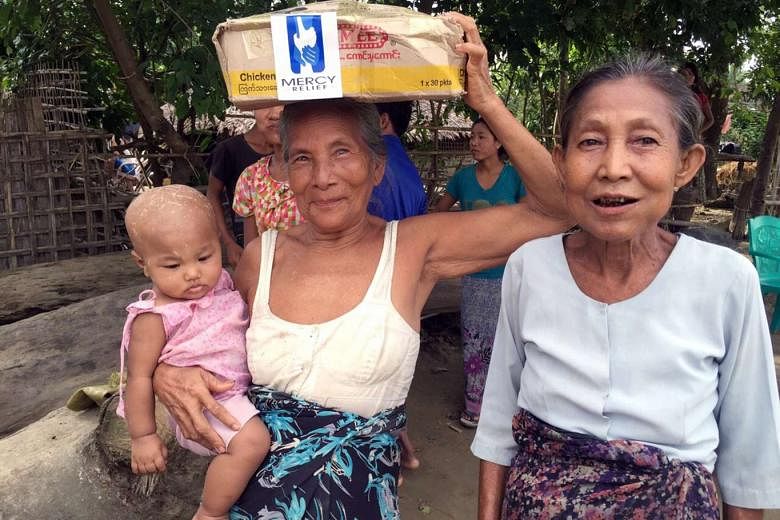HINTHADA • Every night, Mr Aung Myo Tun climbs onto the raised platform where he sleeps with his wife, six children and mother-in-law, listening in growing panic to the sound of water lapping around his house in Myanmar's Irrawaddy Delta.
"We are in trouble," said the farmer, tired from two weeks of guarding his family from the swirling river that has swallowed his village, as the country battles its worst flooding in years."We are watching the kids day and night. They are not old enough to swim," the 39-year-old said, adding that the family now survives on donated food.
They are among the thousands of beneficiaries of the mass mobilisation of ordinary people delivering aid - an example of the self-reliance that is partly the legacy of decades of neglect under military rule.
In Mr Aung's village, near Hinthada in central Myanmar, residents are used to around two feet of seasonal flooding from the Irrawaddy river nearby. But the water has risen to six feet after heavier-than-usual rains this year caused landslides and flash floods across swathes of Myanmar.
More than 100 people have been killed and a million affected since last month, with four states declared disaster zones by the authorities, who have struggled to respond to the vast scale of the crisis.
Like many, Mr Aung has not sought the government's help in the country's worst natural disaster since Cyclone Nargis, which left at least 138,000 dead or missing in May 2008.
That crisis cemented the then ruling junta's reputation for callous indifference - its leaders denied foreign aid for weeks and even suggested in state media that victims did not need help because they could forage for frogs and fish. This time, the country's quasi-civilian government, which took power in 2011, has welcomed international help, deploying the military to deliver aid by truck and helicopter, and setting up shelters in public buildings.
But many local residents said they were reluctant to leave their homes and livestock. Despite reporting scant government aid, most did not fear hunger with regular deliveries of rice, noodles and bottled water couriered across the water by a vast network of well-wishers. In Yangon, fund-raisers in "Save Myanmar" T-shirts wander through the city with collection bowls. "We are helping as much as we can," said 18-year-old Hein Sit, whose roadside team collected about US$1,200 (S$1,680) in three days - an impressive display of generosity in a nation where even a US$3 daily minimum wage proposal has proved controversial.
Local organisations "play a key role" but tend not to have a full overview, said Mr Patrick Fuller of the International Federation of Red Cross and Red Crescent Societies, as foreign aid groups boost efforts.
Singapore group Mercy Relief arrived in the worst-hit state of Rakhine on Monday, and has delivered more than 10 tonnes of food to about 350 families. It has also launched a public appeal for funds until Sept 30 for its relief efforts in Myanmar.
AGENCE FRANCE- PRESSE

